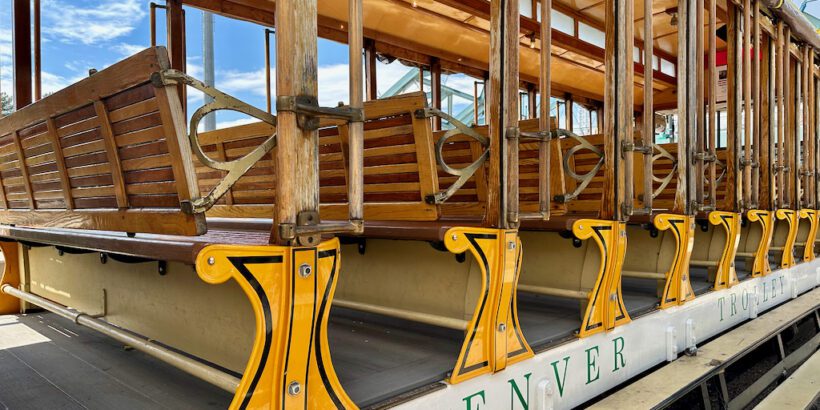Like many major cities in the US, the streetcar played a vital role in the progress and growth of the city of Denver.
Today, you won’t hear the clickety-clack of the tracks echoing through the city streets, but there is one place where you can get a taste of history, and that place is the Denver Trolley.
Below, I’ll provide you with all the information you need to know about the Denver Trolley before your visit, including some intriguing historical background that will enhance your experience even further.
Table of Contents
What is the Denver Trolley?
The Denver Trolley is a remodeled trolley found in Downtown Denver that takes visitors to various stops along a 25-minute journey.
The trolley or “street car” is not one of the original street cars used in Denver. Instead, it is a replica built in 1986 that is meant to look like a 1903 Brill open streetcar.
The frame and steel components of the car were originally taken from Melbourne, Australia, but it was made by the Gomaco Trolley Company in Ida Grove, Iowa.
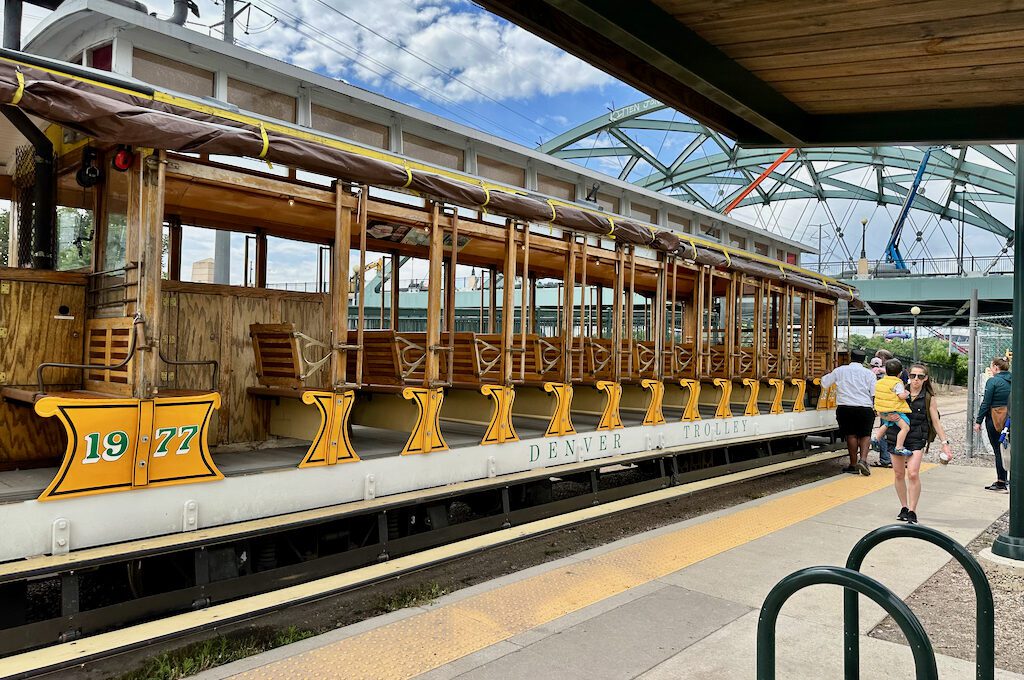
Tip: If you want to step inside of a vintage closed street car used in Denver then be sure to visit the Aurora History Museum where they have a 100+ year old beautifully preserved streetcar that you can step inside of.
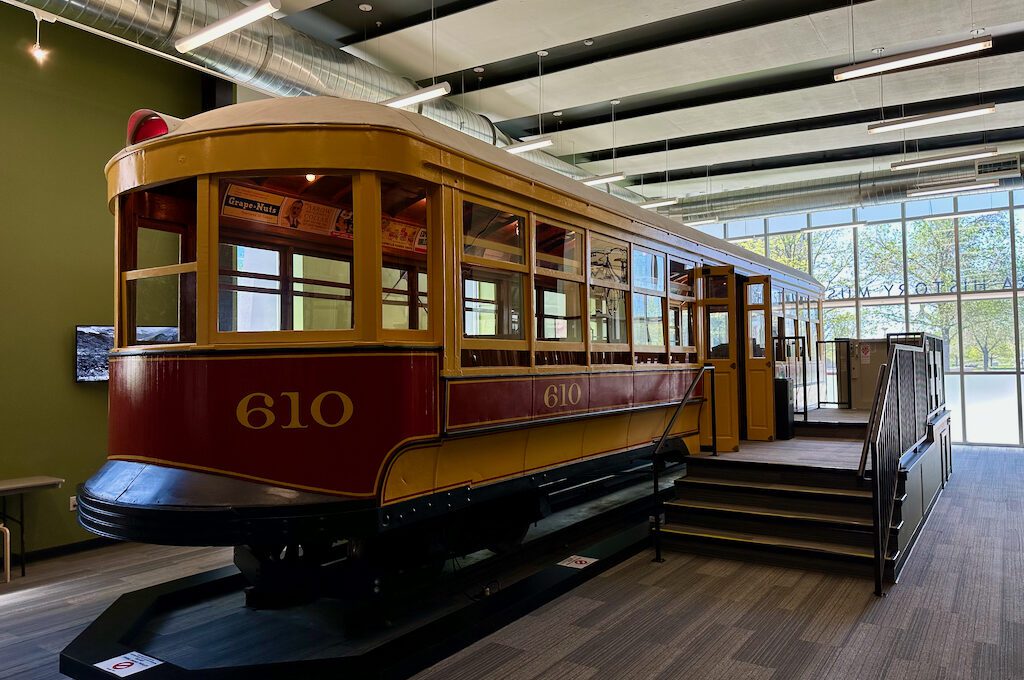
The rise and fall of the Denver Trolley: a brief history
Stepping onto the Denver Trolley is like a time-traveling adventure and fun in it’s own right. But it’s even better when you understand how street cars were the lifeblood of cities in the early 20th century.
In 1871, Denver introduced its first horsecars, marking the beginning of the city’s public transportation journey. Over the next decade, Denver ventured into experimenting with steam dummies and storage batteries as alternative propulsion systems. However, these early attempts faced several challenges that deterred public interest.
The horsecars, while a significant advancement at the time, had their limitations. They relied on horses for propulsion, which restricted their speed and range. Additionally, the use of horses meant dealing with waste management and maintenance, which could be a nuisance in the growing city.
The introduction of steam dummies was an attempt to harness steam power for transportation. However, these steam-powered vehicles had their drawbacks. They were noisy, emitted pollution, and required a dedicated infrastructure for steam generation, making them less desirable for urban environments.
Storage batteries were another avenue explored to power the streetcars. While they offered a cleaner alternative compared to steam, their limited range and frequent need for recharging posed practical challenges.
The technology of the time simply couldn’t provide the necessary speed, efficiency, and convenience demanded by the growing city.
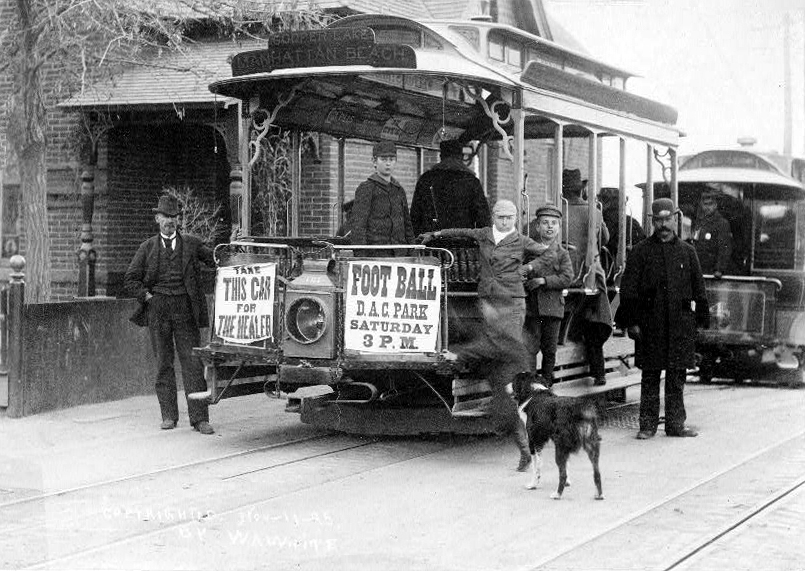
Soon, the Tramway and the Denver City Cable Railway Company introduced cable railway technology to the Mile High City in 1888. And it didn’t take long for Denver to boast “one of the most comprehensive networks in any city,” including the longest recorded individual cable line spanning approximately 7 miles.
Indeed, cable railways represented a significant improvement over horsecars in terms of speed and operational costs. These innovative systems allowed for faster travel, approximately twice the speed of horsecars. They also eliminated the expenses associated with feeding, stabling, and maintaining a large number of horses.
However, cable railways did have their own set of drawbacks.
Installing the infrastructure, including the underground cables, grips, and pulley systems, was a costly endeavor. Maintenance also wasn’t cheap.
And their safety record wasn’t exactly flawless. For example, grip mechanisms could malfunction making it impossible for streetcars to stop! The Denver winters weren’t so kind to cable cars, either.
So cable cars were phased out in 1900, as a new invention spread across the country: electric streetcars.
Finally, after years of experimentation and dealing with the shortcomings of horsecars, steam dummies, and cable cars, electric street cars came into existence in Denver in 1889, shortly after their invention.
In fact, with over 250 miles of trackage in the Denver metro area and 40 miles of interurban rails Denver had one of the most comprehensive networks in the country!
Initially, there were several street car companies but they were eventually consolidated into one company, the Denver Tramway Company, which would dominate public transportation in the city for over 60 years.
The trolleys were the architects of urban expansion, fueling the growth of cities and nurturing economic development. Along their tracks, new neighborhoods sprouted, businesses flourished, and the heartbeat of the city grew stronger.
For a long time, streetcars served as a sort of a status symbol for cities like Denver who were trying to show the rest of the country that they were more than just “cow towns.”
The catalysts of progress, streetcars helped to propel cities forward into a brighter future.
However, as time went on, particularly from the 1920s to the 1950s, they gradually became outdated due to the emergence of buses and automobiles.
Unlike the streetcars bound to fixed tracks, buses were free spirits, able to weave through the urban maze at will. And once automobiles started to become affordable nothing could compete with the personal liberation and the thrill of the open road.
The last streetcar bid its farewell in 1950, marking the closing chapter of a transportation legacy.
Many people were very sad to see them go. After all, they had helped take the city to unimaginable levels of growth and prosperity.
As the tracks disappeared, either removed or hidden beneath layers of asphalt, the physical presence of the streetcars faded. Yet, their impact on the city’s identity and collective memory remained.
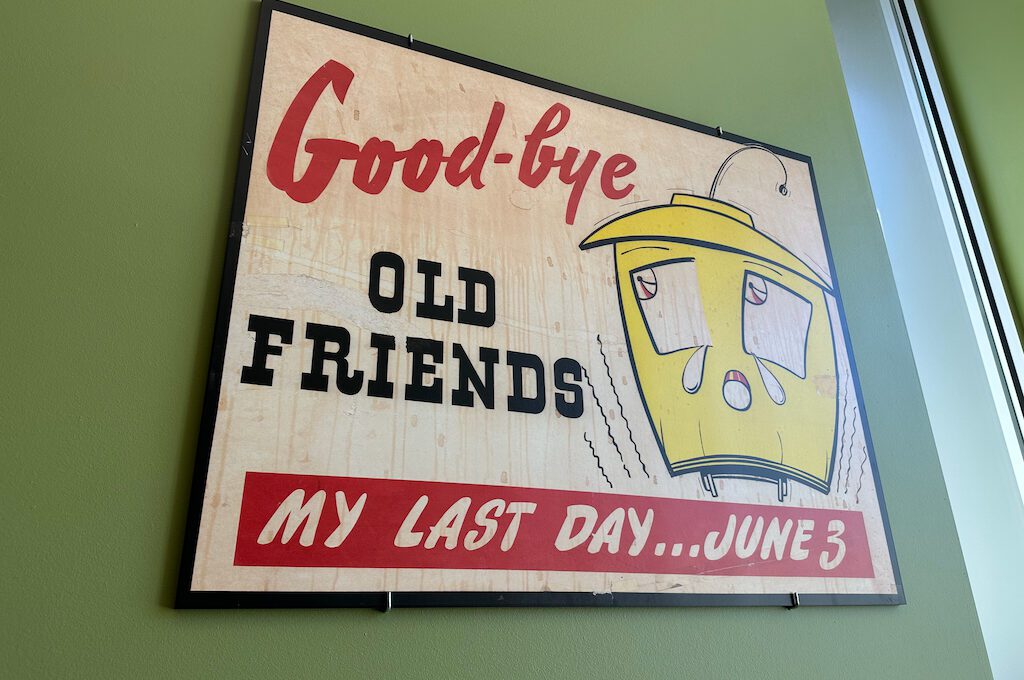
Where is the Denver Trolley?
It’s very easy to find the Denver Trolley.
All you need to do is head to the REI Flagship store near Confluence Park since it’s located right next door. It’s a big store but if you head to the side with the Starbucks, you’ll see the signs pointing you towards the Denver Trolley.
Follow the signs to the tent where you will purchase your tickets which you can do with cash or credit card.
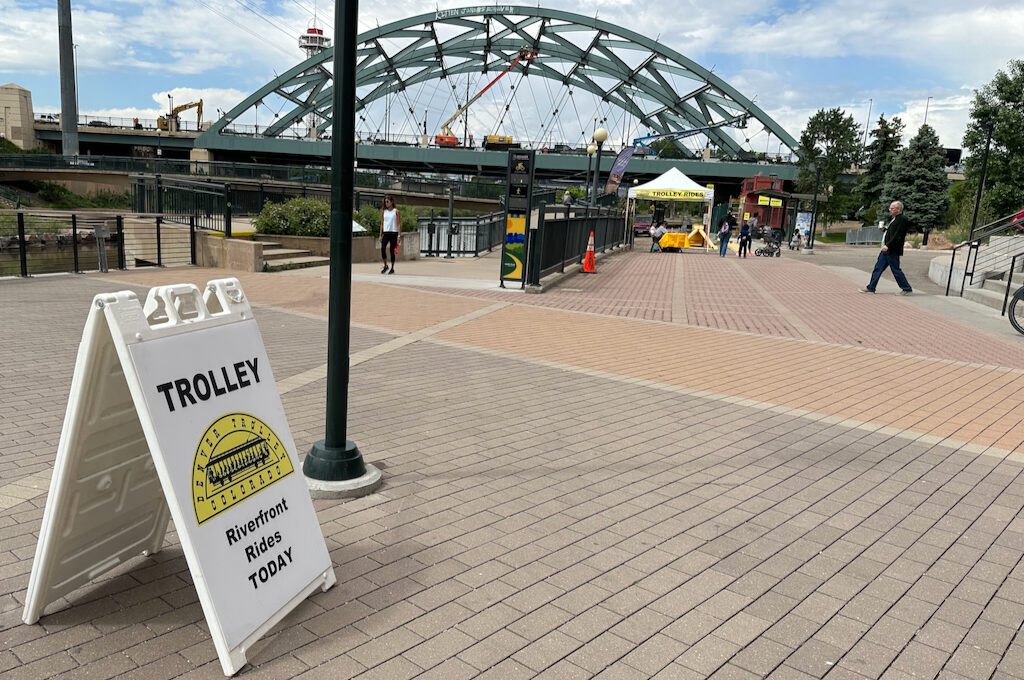
The trolley typically runs from 10 AM to 5 PM. There are some sources online that state the trolley opens at 11 AM but when we visited it was up and running at 10 AM. Also, keep in mind that it only runs on Thursday through Monday and usually only between Memorial Day and Labor Day.
Here are the prices for the trolley as of 2023:
- $7 Adults (ages 13 and older)
- $3 Children (under age 13)
- Free children under age 4
As for parking, we usually just find parking on Platte Street (around the corner from the REI store), which will give you two hours.
Visiting the Denver Trolley
We arrived about 10:15 AM which was 15 minutes after opening. This gave us enough time to pick up our tickets and then head to Starbucks for a quick snack while we waited on the trolley to return.
They allow you to bring drinks and food on to the trolley so you can enjoy the sites along with your drinks or snacks.
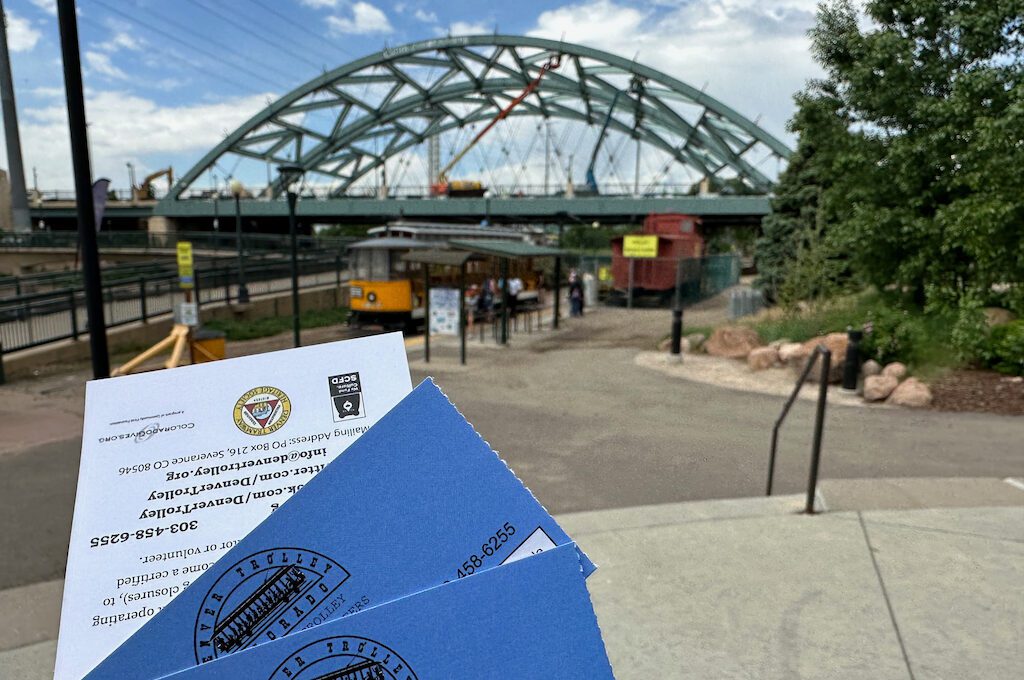
The trolley departs about every 30 minutes so you can time your visit so that you don’t wait around very long, especially if you are arriving in the morning times. But even if you do need to wait around, you can explore the waterways of Confluence Park, check out the huge REI store, or hang out at Starbucks.
When you arrive, you will have your ticket punched and then you can board anywhere you find an open seat.
There’s a couple of things to know about boarding though.
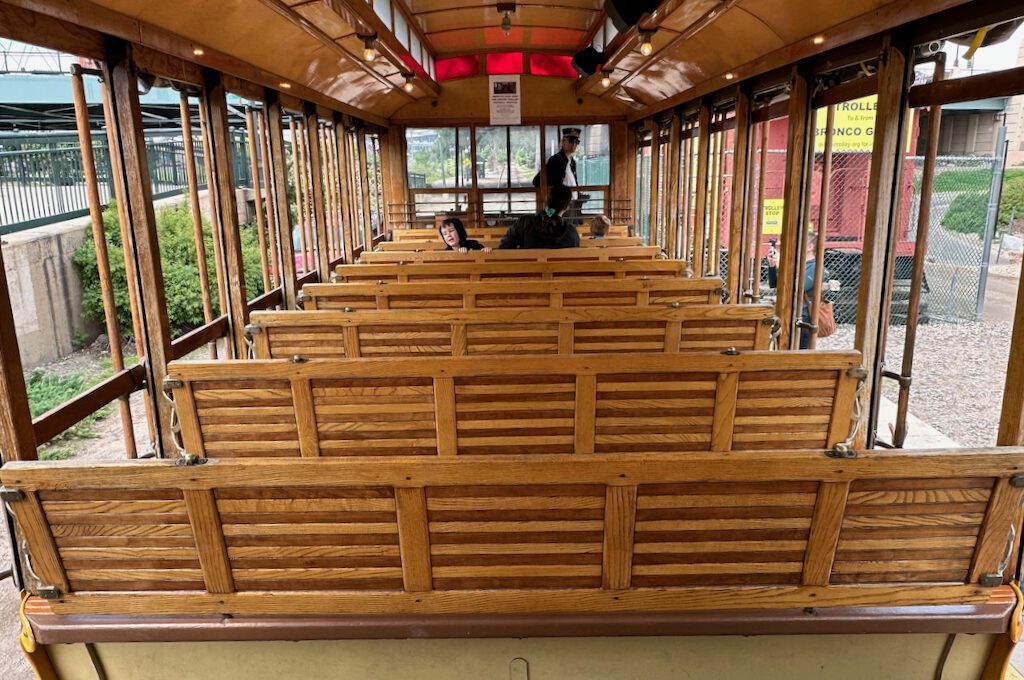
First, you can flip the trolley seatback so that the seat row faces the opposite direction. This allows bigger groups to sit together facing each other as long as one side is okay with traveling backwards.
If you’re seated in the back, and the row in front of you decides to face each other this means that you will likely be forced to ride backwards on the way back so think twice about using the back row.
Another thing you might want to think about is sitting in close proximity to the speakers so that you can hear all of the information. Most of the seats are lined up well with the speakers but some towards the back are perhaps not the best for those hard of hearing.
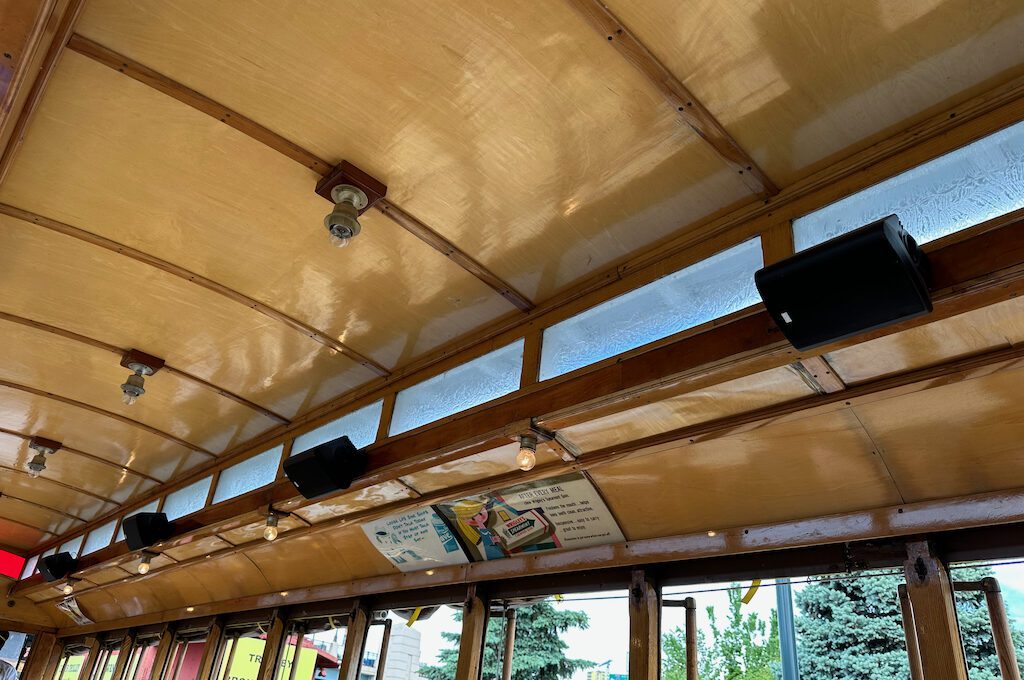
Once everybody is situated, the staff will put up the safety guards, and then the trolley will take off. The entire journey is not very long and takes about 25 minutes round-trip. From Confluence Park, you’ll make a stop at the Aquarium, Children’s Museum, and at Mile High Stadium.
There is some talk in the works to add additional stops on the journey, including stops at the Denver Transit Museum and Decatur Street where you will be able to transfer to RTD’s West Side Light Rail line to and from Lakewood and Golden, but those were not in service at the time of our visit.
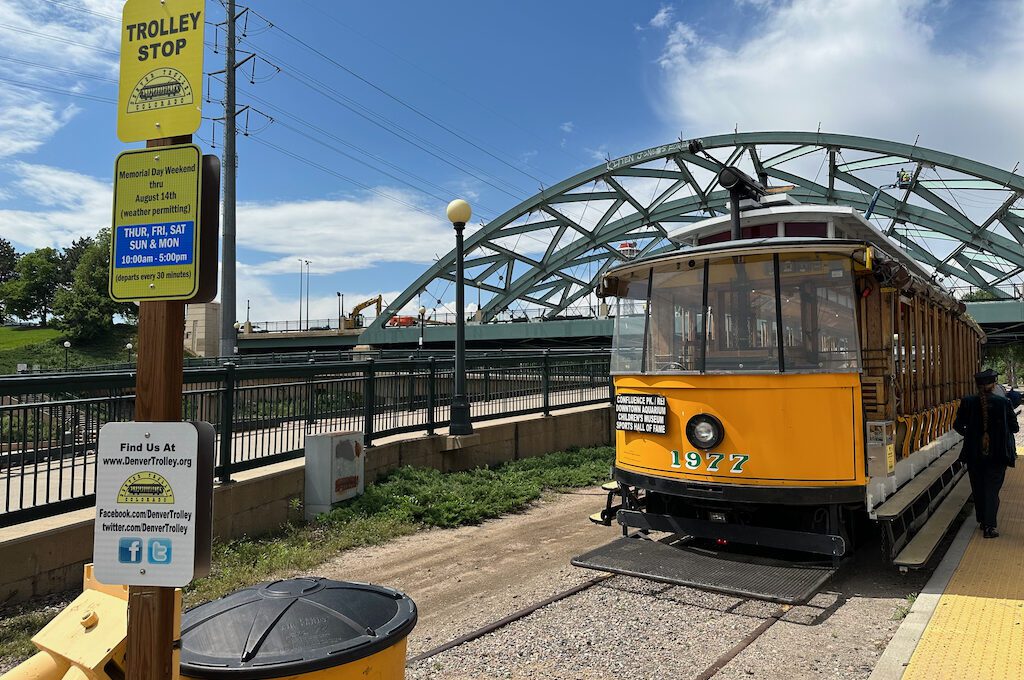
On the southbound journey, you’ll be able to disembark at any one of those stops. As long as you have your ticket punched, you’ll be able to reboard and complete your journey. However, on the way back, there will be no stops.
If you’re looking straight ahead, I’d recommend you sitting on the right side of the street car in order to get some of the better views of some of the main sites although both sides can offer you some decent views.
With that said, be prepared because there is quite a bit of foliage/ overgrowth blocking your view at times so it’s not quite as scenic as I would have preferred.
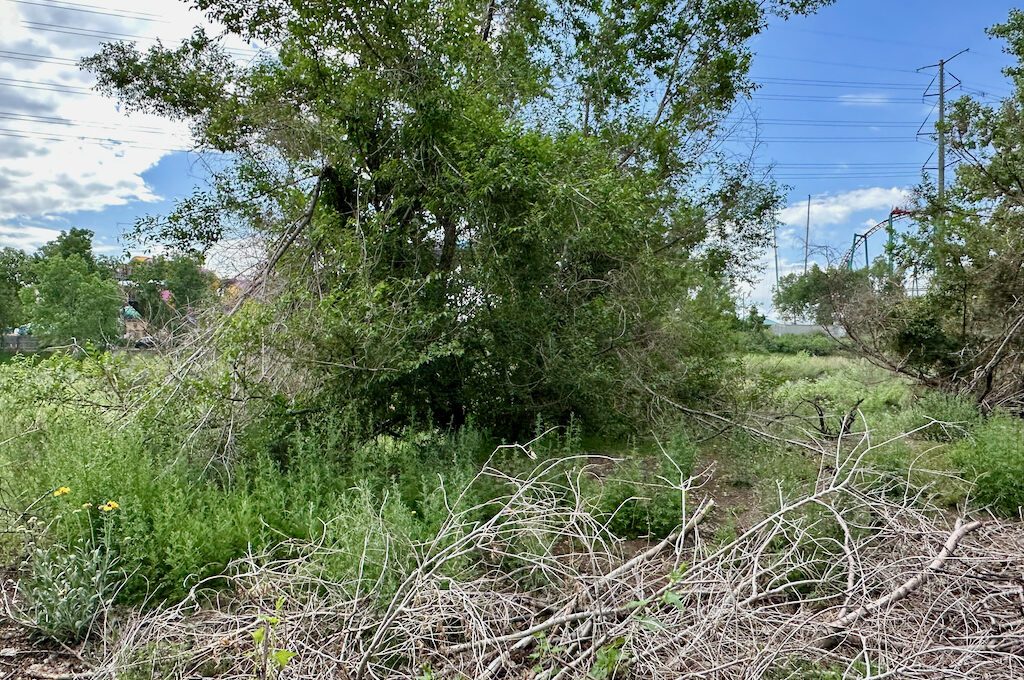
As you depart from the Confluence Park area, you’ll have impressive views of the Denver skyline on the left side. This vantage point showcases some of the city’s more contemporary buildings, including the remarkable 1144 Fifteenth tower, which happens to be my favorite skyscraper in Denver.
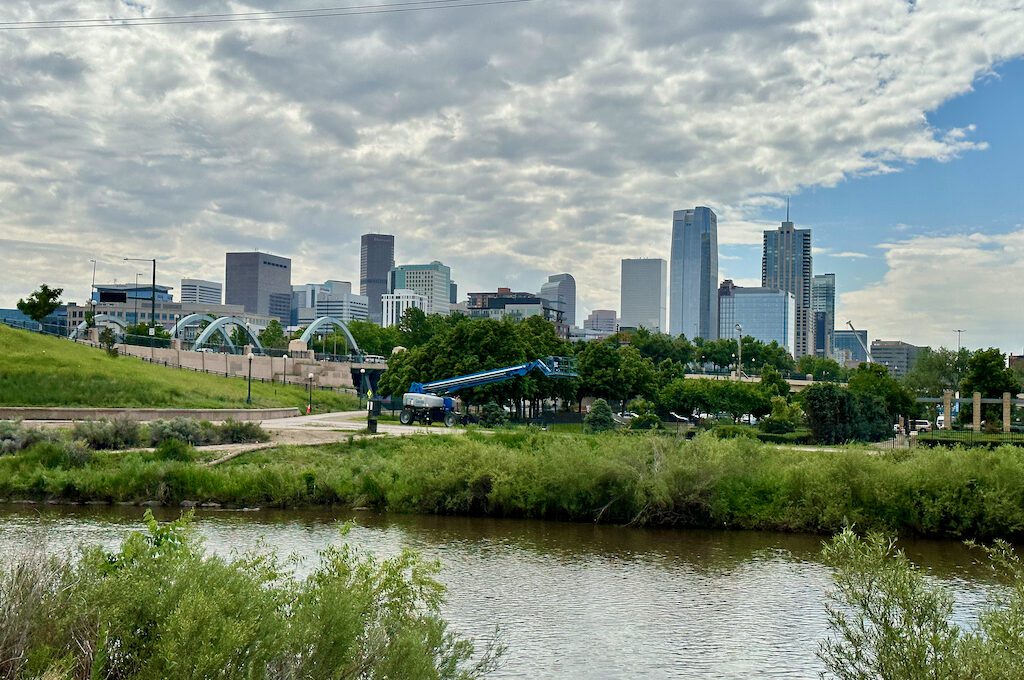
You’ll then pass Elitch Gardens on your left which is a theme park that’s been around for a while.
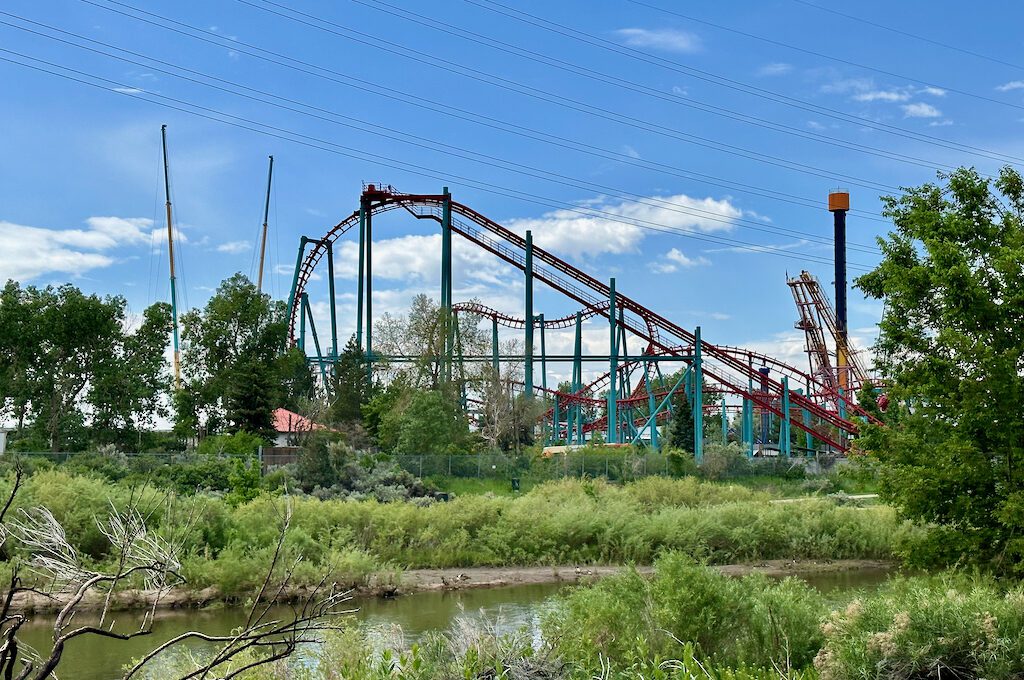
As you stroll along the water ways, you’ll likely encounter people exercising or just going for leisurely walks by the river. Some might even give you a friendly wave.
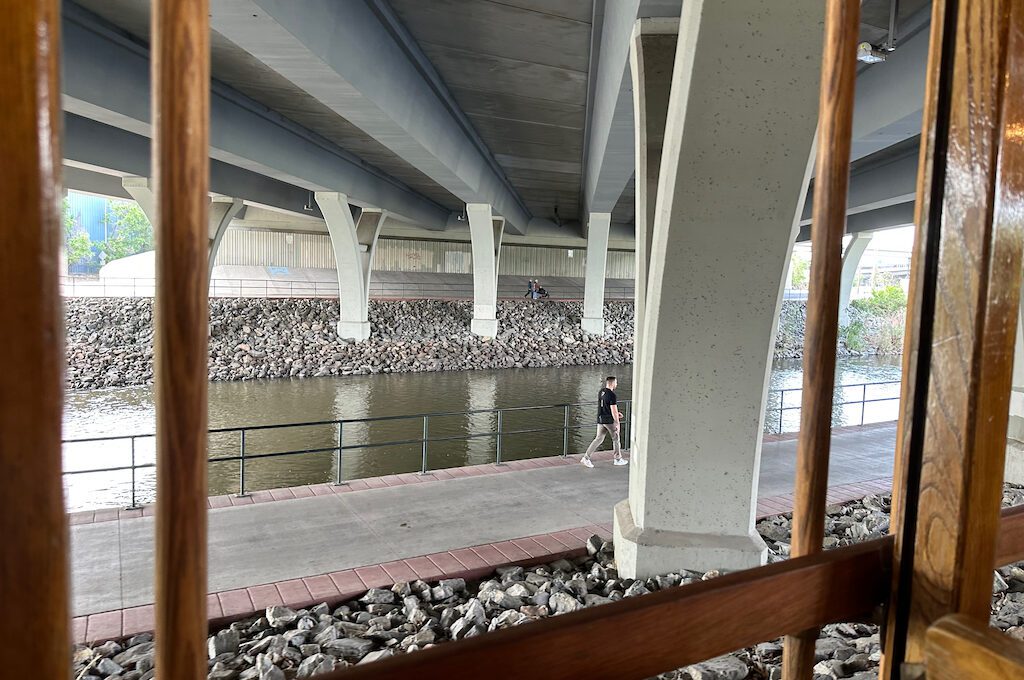
Your first stop will be the Aquarium although a lot of the view is heavily obscured by trees. Next, you will stop by the renowned Children’s Museum of Denver at Marsico Campus.
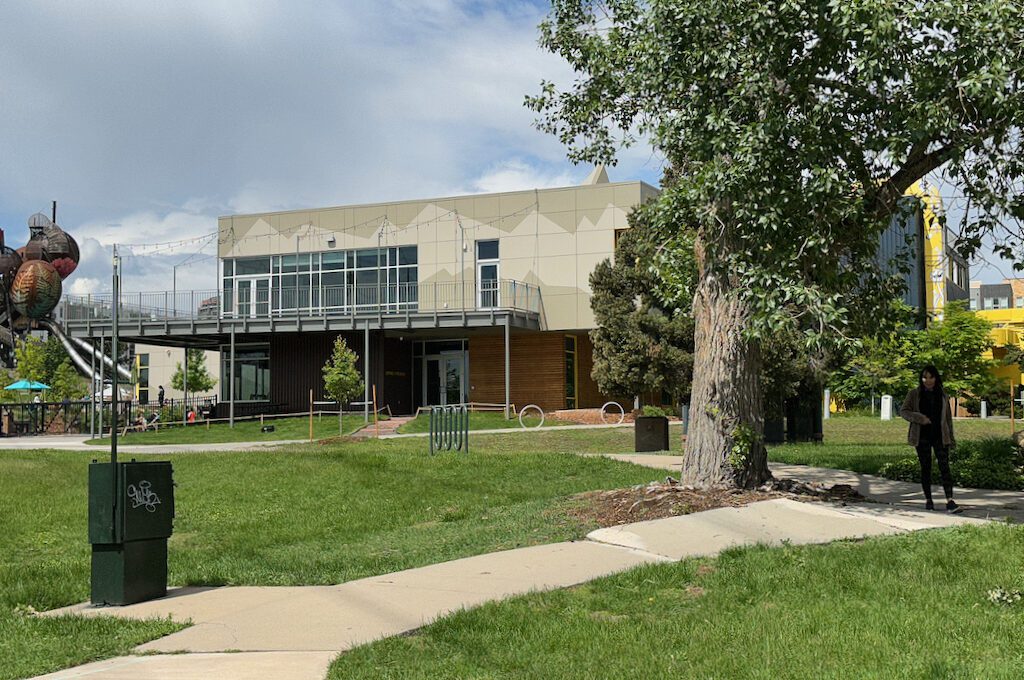
Throughout your trolley journey, your conductor will be giving you some insight into the history of these sites.
The crew is very young which is very fitting.
Back in the day, many of the streetcar conductors were students themselves. They jingled their way through the city, not just to punch tickets and collect fares, but to fund their college dreams.
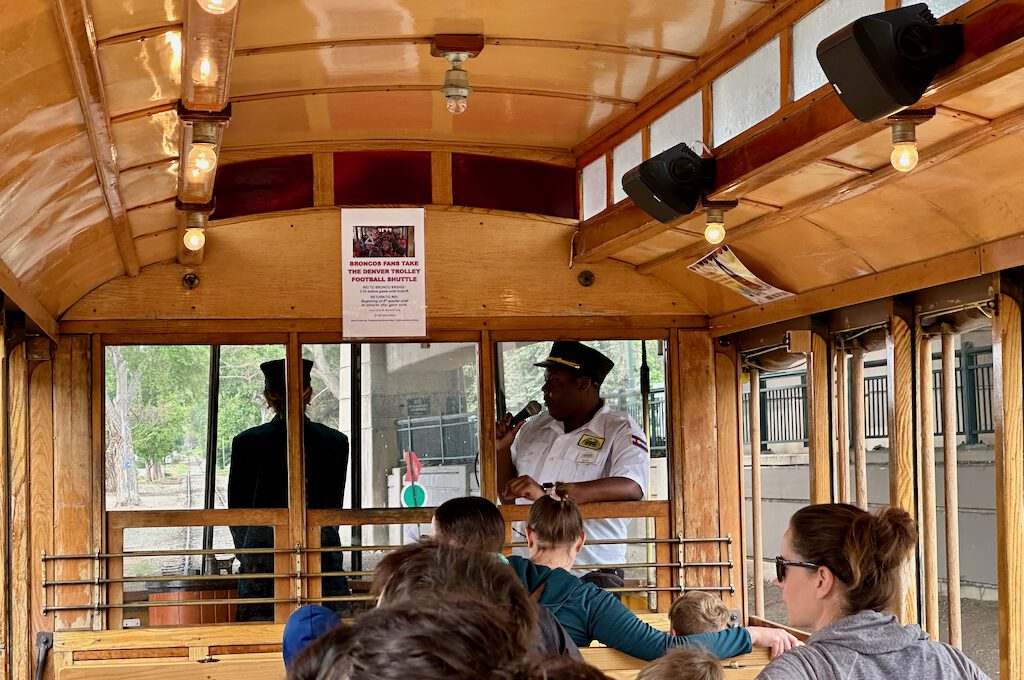
As you continue on, you’ll see Meow Wolf on the left which is a very fascinating immersive art experience. We really enjoyed our time exploring it’s psychedelic corridors and I’d highly recommend it for anyone looking for something to do that is way out of the ordinary. Be sure to read our helpful guide before you make your visit!
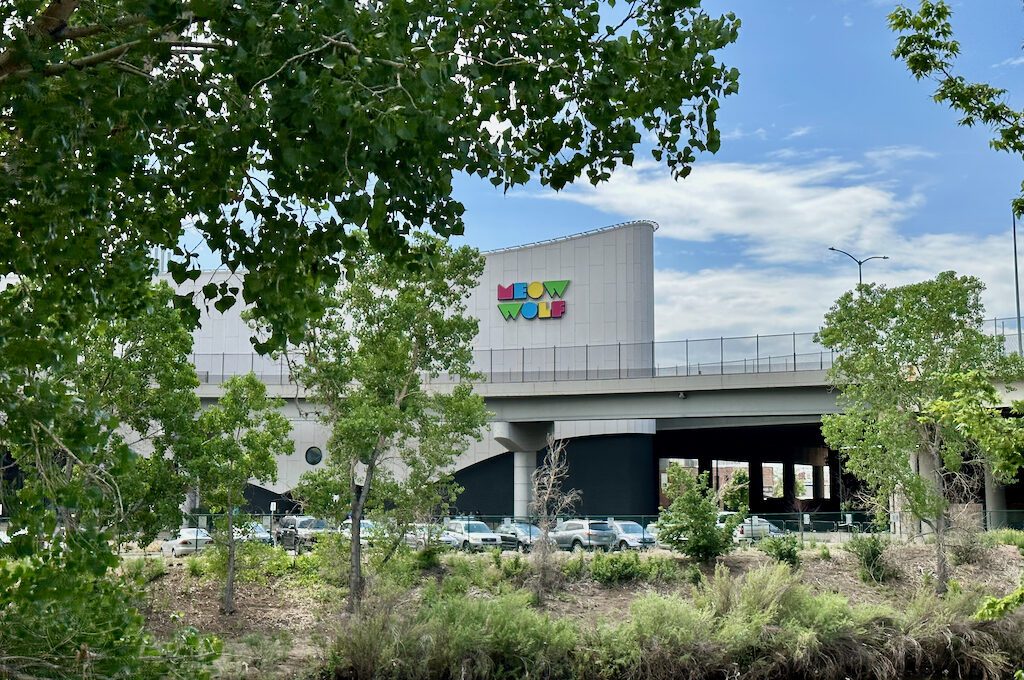
On the other side you’ll see Empower Field which of course is home to the Denver Broncos. During football season on game days the trolley runs to Empower Field which is a popular way for some people to get to and from the stadium so that they don’t have to deal with parking.
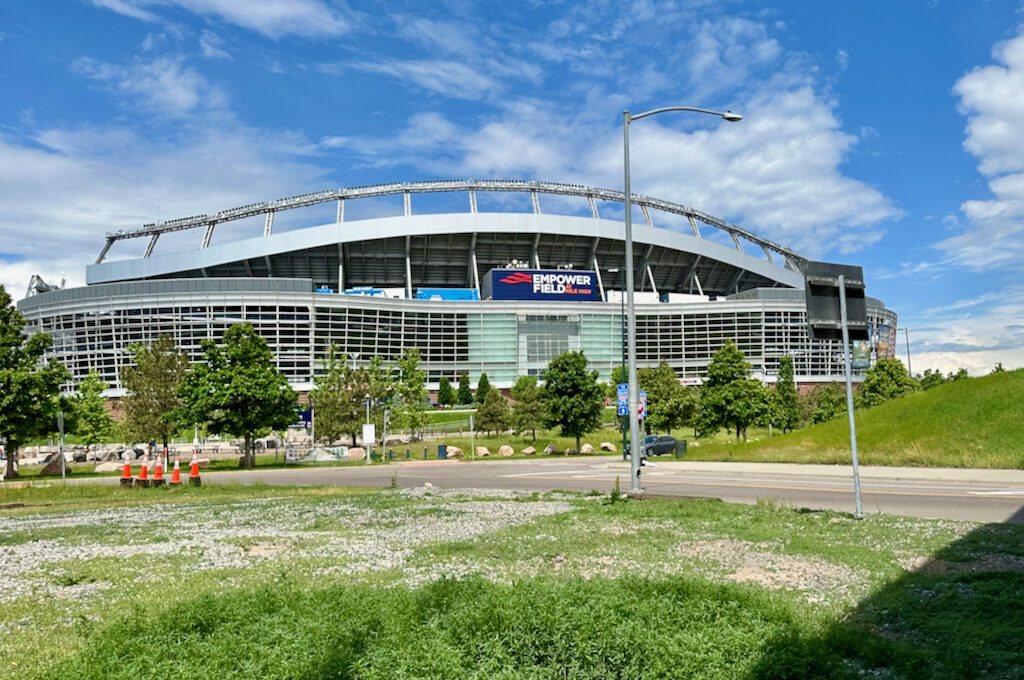
Once you get to the turnaround point, the crew will get out in order to flip the seat backs around if you prefer to not sit backwards.
At that point, it’s a nonstop journey back to where you started. When you finish up, a popular treat for kids is being able to blow the whistle or the horn so make sure you don’t miss out on that opportunity.
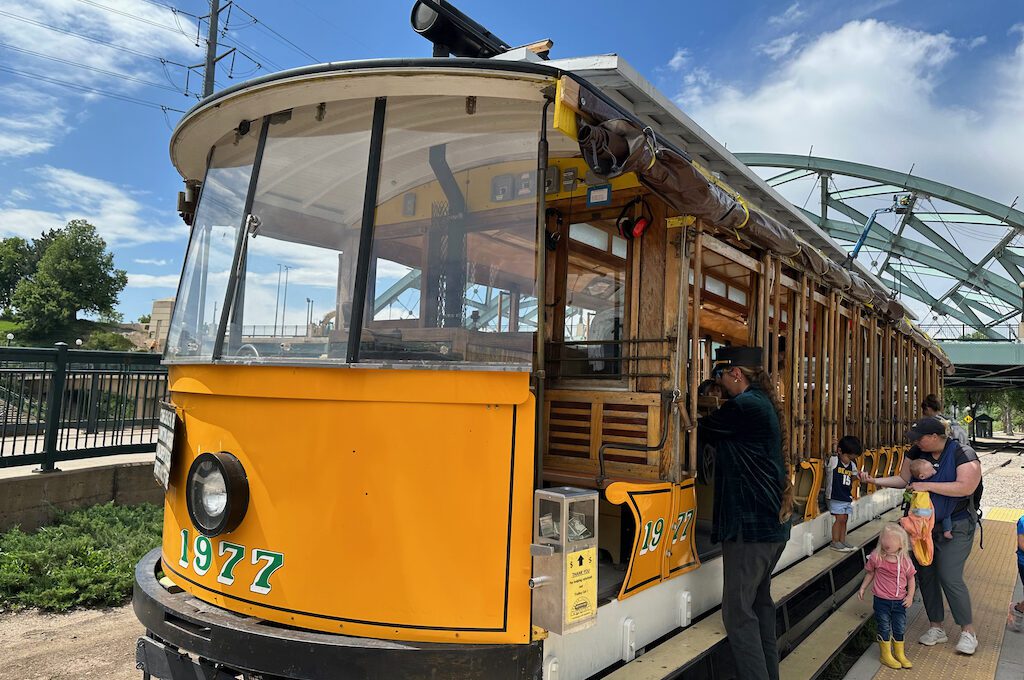
Final word
Overall, the trolley is a pretty short ride of only around 25 minutes. For $7 for an adult, it’s not a bad value although I do wish that it could’ve been a little bit more scenic or at least a little bit longer.
This is the type of attraction well suited for families with small kids but it’s also a great experience for people interested in getting a taste of the ways that people get around back in the day and to pay a little bit of tribute to the streetcar.
Daniel Gillaspia is the Founder of UponArriving.com and the credit card app, WalletFlo. He is a former attorney turned travel expert covering destinations along with TSA, airline, and hotel policies. Since 2014, his content has been featured in publications such as National Geographic, Smithsonian Magazine, and CNBC. Read my bio.

